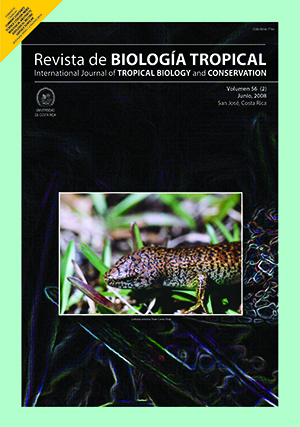Abstract
Home range shifts prior to natal dispersal have been rarely documented, yet the events that lead a subadult to abandon a portion of its home range and venture into unfamiliar territories, before eventually setting off to look for a site to reproduce, are probably related to the causes of dispersal itself. Here, we used a combination of manual radio-tracking and an Automated Radio Telemetry System to continuously study the movements of a subadult male ocelot (Leopardus pardalis), a solitary carnivore with sex-biased dispersal, on Barro Colorado Island, Panama, for 18 months from May 2003 through October 2004. The subadult ocelot?s parents were also radio-tracked to record possible parent-offspring interactions within their home ranges. At the age of ca. 21 months the subadult gradually began to shift its natal home range, establishing a new one used until the end of the study, in an area that had previously been used by another dispersing subadult male. Only three parent-offspring interactions were recorded during the four months around the time the range-shift occurred. The apparent peaceful nature of these encounters, along with the slow transition out of a portion of his natal home range, suggest the subadult was not evicted from his natal area by his parents. The timing of the shift, along with the subadult?s increase in weight into the weight range of adult ocelots four months after establishing the new territory, suggests that predispersal home range shifts could act as a low risk and opportunistic strategy for reaching adult size, while minimizing competition with parents and siblings, in preparation for an eventual dispersal into a new breeding territory.##plugins.facebook.comentarios##

This work is licensed under a Creative Commons Attribution 4.0 International License.
Copyright (c) 2008 Revista de Biología Tropical
Downloads
Download data is not yet available.






